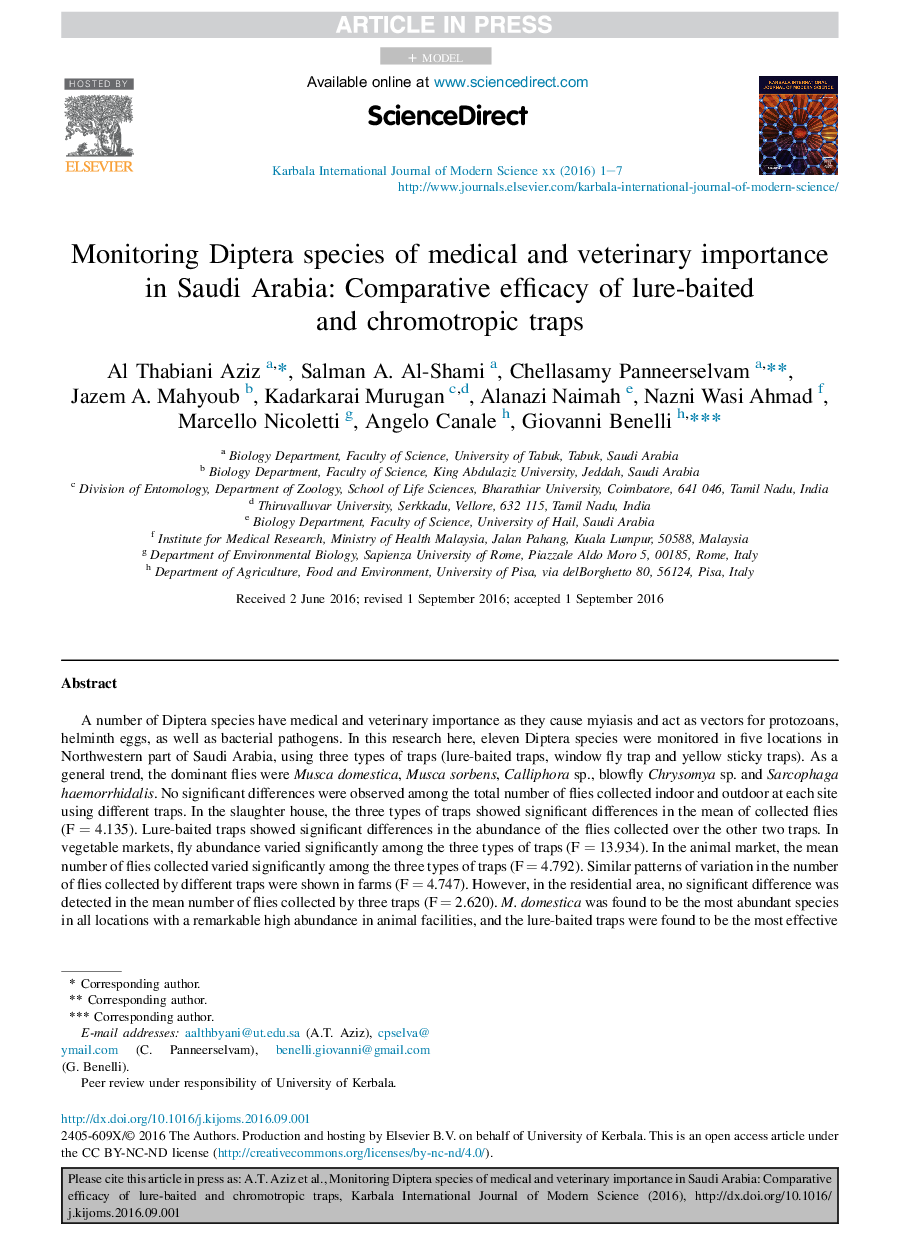| Article ID | Journal | Published Year | Pages | File Type |
|---|---|---|---|---|
| 6899151 | Karbala International Journal of Modern Science | 2016 | 7 Pages |
Abstract
A number of Diptera species have medical and veterinary importance as they cause myiasis and act as vectors for protozoans, helminth eggs, as well as bacterial pathogens. In this research here, eleven Diptera species were monitored in five locations in Northwestern part of Saudi Arabia, using three types of traps (lure-baited traps, window fly trap and yellow sticky traps). As a general trend, the dominant flies were Musca domestica, Musca sorbens, Calliphora sp., blowfly Chrysomya sp. and Sarcophaga haemorrhidalis. No significant differences were observed among the total number of flies collected indoor and outdoor at each site using different traps. In the slaughter house, the three types of traps showed significant differences in the mean of collected flies (FÂ =Â 4.135). Lure-baited traps showed significant differences in the abundance of the flies collected over the other two traps. In vegetable markets, fly abundance varied significantly among the three types of traps (FÂ =Â 13.934). In the animal market, the mean number of flies collected varied significantly among the three types of traps (FÂ =Â 4.792). Similar patterns of variation in the number of flies collected by different traps were shown in farms (FÂ =Â 4.747). However, in the residential area, no significant difference was detected in the mean number of flies collected by three traps (FÂ =Â 2.620). M. domestica was found to be the most abundant species in all locations with a remarkable high abundance in animal facilities, and the lure-baited traps were found to be the most effective for monitoring fly abundance. Overall, our research adds basic knowledge for future control programs against flies of medical and veterinary importance in Saudi Arabia.
Keywords
Related Topics
Physical Sciences and Engineering
Chemistry
Chemistry (General)
Authors
Al Thabiani Aziz, Salman A. Al-Shami, Chellasamy Panneerselvam, Jazem A. Mahyoub, Kadarkarai Murugan, Alanazi Naimah, Nazni Wasi Ahmad, Marcello Nicoletti, Angelo Canale, Giovanni Benelli,
